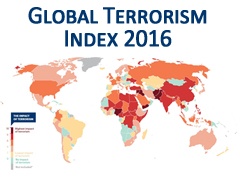Concealment is the act of hiding or preventing something from being known. It happens more often than we’d like, ranging from minor infractions to major threats to our security. The unknown variable of who may or may not try to sneak items passed the checkpoint constantly requires security personnel to be on guard.
Fortunately, personnel are trained to detect anomalies and pick up on various concealment methods used by these offenders. Let’s discuss concealment and some creative tactics observed in the industry that all checkpoint staff should be aware of.
Read More
Topics:
Aviation Security,
General Security,
Cargo Security,
Ports & Borders,
Critical Infrastructure,
Transportation
Mailroom screening is an important part of keeping your critical infrastructure facility secure. As an essential part of the community, you cannot afford to have any disruptions to your day to day operations.
Whether you are a bank, correctional facility, school, or courthouse, your mailroom is responsible for processing incoming and outgoing mail. Ensuring operations around this are kept safe is imperative. With a proactive approach, you’ll be prepared to protect your facility, staff, and assets in case of an attack.
Read More
Topics:
General Security,
Critical Infrastructure,
Security Threats,
Current Events
Security checkpoints exist as a measure of precaution to protect certain areas, only allowing specified individuals and items through the threshold. We’ve all experienced these points of inspection at least once in our lives. Many people tend to think of an airport security checkpoint, but it may also include checkpoints at secure buildings, government facilities, courthouses, correctional facilities, etc.
We often expect a smooth transition through the checkpoint, but many of us know from experience that this is not always the case. There are many bottlenecks that can occur including blockages caused by the public, staff, and current process.
Read More
Topics:
Aviation Security,
General Security,
Critical Infrastructure
Suicide bombings can occur anywhere. When we hear about them, they typically occur in North African countries or the Middle East region. One of the latest attacks occurred in Kabul, Afghanistan on the morning of May 31 in the city’s diplomatic quarters, killing at least 90 people and injuring more than 400.
At times, they occur in Asian or Western regions such as the attack in Manchester, UK which occurred shortly after a concert concluded on May 22, killing 22 and injuring dozens. In another incident just two days later, a pair of suicide bombers killed three police officers outside a bus terminal in Jakarta, Indonesia.
No one can tell where and when a suicide bomber will strike. That’s why incidents like these are such a shock and difficult to cope with. It does not matter where in the world you are, it’s clear that the threat of the suicide bomber has grown greater and become more widespread.
Read More
Topics:
Trends,
General Security,
Critical Infrastructure,
Security Threats,
Current Events
For years terrorists have called on followers, affiliates, and sympathizers to use any means necessary to harm those who do not follow their ideals. For those who are unable to build their own bombs or acquire the necessary weapons to carry out attacks, the use of vehicles has been recommended to cause damage and harm people.
We’ve seen it time and time again. Terrorists and lone wolfs drive trucks, lorries, and other vehicles through large crowds, injuring and killing the defenseless. It’s an ugly terrorism tactic that has gained momentum in the past few years. Even in just the last few months, we’ve witnessed a handful of these vehicle attacks worldwide. Let’s look back at the most recent incidents and discuss this new terrorism trend of using vehicles as a weapon.
Read More
Topics:
Trends,
General Security,
Critical Infrastructure,
Security Threats,
Current Events
Released November 2016, the fourth edition of the Global Terrorism Index (GTI) generated by the Institute for Economics & Peace (IEP) continues to analyze key global terrorism trends and patterns for 163 countries. Raw data is derived from the Global Terrorism Database which is considered to be the most comprehensive dataset on terrorist activity, with over 150,000 terrorist incidents documented worldwide.
This most recent edition of the terrorism index puts an emphasis on a 16-year time frame beginning in 2000 through the end of 2015. As defined by the GTI, terrorism is “the threatened or actual use of illegal force and violence by a non-state actor to attain a political, economic, religious, or social goal through fear, coercion, or intimidation.” Here’s a summary of the latest global terrorism trends, facts, and figures.
Read More
Topics:
Aviation Security,
Trends,
General Security,
Cargo Security,
Security Threats
One of the primary weapons of choice for terrorists and lone wolf attackers has been the Improvised Explosive Device, or IED. These dangerous, homemade devices are typically constructed from common household items making them rather inexpensive to build. Nevertheless, IEDs can pack a powerful punch and have been known to cause an extraordinary amount of damage and loss of life.
Consequently, security checkpoint personnel must always be on high alert for the IED threat. If allowed to pass through a checkpoint, the device will certainly be used with malicious intent. At a fundamental core, security personnel must gain a basic understanding of improvised explosive devices and how they are constructed in order to recognize when one is presented before them.
Read More
Topics:
Aviation Security,
General Security,
Cargo Security,
Ports & Borders,
Critical Infrastructure,
Security Threats,
Transportation
If it seems as though terrorism has been on the rise these past few years, it has. Terror attacks have spread to more countries than ever and innocent, private citizens are increasingly becoming targets. When terrorism strikes, it undeniably leaves a lasting impact on the nation and its people.
In the third edition of the Global Terrorism Index for 2015, the Institute for Economics and Peace (IEP) collected data from the Global Terrorism Database to determine key global trends and patterns in terrorism over the past 15 years, with an emphasis on 2014. Let’s take a look at these global terrorism trends, facts, and figures.
Read More
Topics:
Aviation Security,
Trends,
General Security,
Cargo Security,
Security Threats
Whether you’ve realized it or not, X-ray security screeners exist everywhere. That’s because X-ray screening technology is present in so many industries. We can find X-ray screeners at airports, cargo facilities, courthouses, schools, correctional facilities, immigration agencies, special events, and more.
These X-ray operators work endlessly to protect the surrounding people and infrastructures from harm by inspecting belongings, packages, and goods flowing through. They are trained to detect contraband, weapons, explosive devices, and drugs. Every day, X-ray security screeners put themselves in potentially dangerous situations and risk their lives to protect us.
Read More
Topics:
Security Training,
Aviation Security,
General Security,
Cargo Security,
Ports & Borders,
Critical Infrastructure,
Transportation
There are many threats that exist in our world. One of which is terrorism. Terrorism is the use of violence and intimidation in the pursuit of political, social, or criminal gains. International terrorism and domestic terrorism both fall under this umbrella.
Recently though, it seems as if domestic terrorism has been on the rise. We hear more and more about homegrown terrorists causing devastation within their own nation. The threat is all too real and it’s happening right here in your own country.
Read More
Topics:
Trends,
General Security,
Ports & Borders,
Critical Infrastructure,
Security Threats,
Transportation










